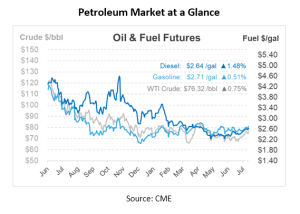
What is it – Downstream in the Oil and Gas Industry
After our previous explanation into the upstream and midstream sector, it’s time to bring it all together with a dive into the downstream sector. Picture this – the crude oil and natural gas have been extracted from the earth and transported through the extensive networks of pipelines. So, what happens next? That’s where the downstream sector comes into play, bringing the oil and gas from processing plants to your backyard.
What is the downstream sector?
Downstream operations kick in post-production. It involves refining crude oil and processing natural gas into a myriad of products, and then distributing and marketing them to consumers. Essentially, it’s everything that happens after the raw materials leave the production facilities and before they reach the consumers.
Companies involved in the downstream process include oil refineries, petrochemical plants, natural gas distributors, and fuel haulers. Some companies, like Mansfield Energy, are specialized players in the downstream sector. Others might be diversified entities engaged in the entire oil and gas production process, from upstream to downstream.
What are the different components of the downstream sector?
The downstream sector of the oil and gas industry is a multifaceted arena, principally comprised of oil refining, supply and trading, and product marketing and retail. Oil refining is the transformation of crude oil into usable products through an assortment of treatments, given that crude oil in its original form is relatively impractical. Supply and trading encompass the logistics, ensuring that these refined products are effectively distributed to the areas where there is a demand.
Product marketing and retail represent the final stage, focusing on the sale of these products to the end-users. Whether it’s a consumer stopping at a gas station to refuel their car, or an industrial facility procuring substantial quantities for operations, this component is crucial in bridging the gap between the extensive processes of the industry and the eventual consumers and businesses that rely on these products.
How complex is the downstream sector?
While the upstream markets are relatively fixed – pipelines don’t move around much – the downstream industry is much more complex. Refineries go offline for planned and unplanned maintenance each year, creating supply challenges. Even more, the last mile, delivering the fuel from a local hub to your location, is incredibly complex and volatile. While pipelines and production wells last years or decades, each delivery is unique. A flat tire, unexpected weather, driver illness, and more can create unexpected logistics challenges that other parts of the industry don’t face.
Regulatory Environment and Challenges
Operating in the downstream sector often means navigating a complex regulatory environment. Governments around the world impose regulations on emissions, product quality, and safety standards. These regulations can vary from region to region, requiring refineries to modify their processes and products to comply with local laws. For instance, the shift toward cleaner fuels has driven refineries to invest in technologies that reduce sulfur content in diesel and gasoline. Additionally, there is a growing demand for alternative and renewable sources of energy. Adapting to this shifting landscape is a challenge for companies in the downstream sector.
Global Supply Chain and Market Dynamics
The downstream sector’s global supply chain is highly sophisticated. Crude oil and natural gas are sourced from different parts of the world, and their prices are subject to global market dynamics. Geopolitical events, natural disasters, or policy changes can have ripple effects on the supply chain. Companies in the downstream sector need to have agile operations to adapt to these changes quickly.
Because of this, these downstream companies operate on margins – the difference between the cost of crude oil and the price at which the refined products are sold. These margins can be volatile and influenced by global crude prices, demand, refining configurations, and much more.
Mansfield operates in the downstream sector of the industry, supplying fuel and petroleum products to customers across the US and Canada. We service customers across a multitude of industries, from government fleets to airline operations. To find out more about Mansfield’s product and service offerings in the downstream sector, visit our website or contact a representative today.

This article is part of Daily Market News & Insights
Tagged:
MARKET CONDITION REPORT - DISCLAIMER
The information contained herein is derived from sources believed to be reliable; however, this information is not guaranteed as to its accuracy or completeness. Furthermore, no responsibility is assumed for use of this material and no express or implied warranties or guarantees are made. This material and any view or comment expressed herein are provided for informational purposes only and should not be construed in any way as an inducement or recommendation to buy or sell products, commodity futures or options contracts.





